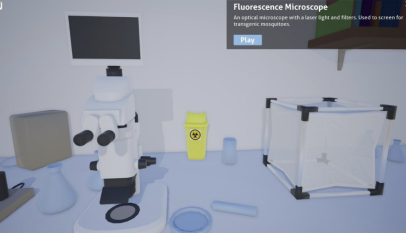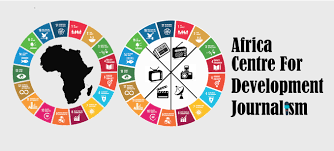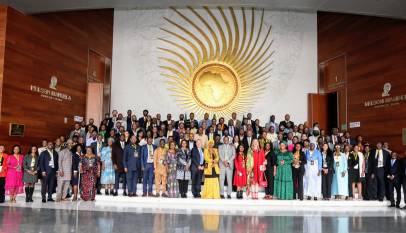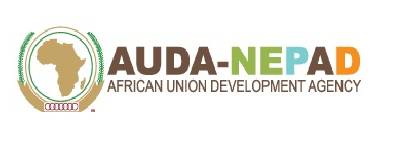INTERVIEW: “Why HIV/AIDS prevalence is increasing among Nigerian youths”

Ibrahim Murtala of the Society for Family Health (SFH), one of Nigeria’s leading health-focused NGOs, speaks about the successes and challenges of the campaign against HIV/AIDS epidemic in Nigeria
The Society for Family Health (SFH) is one of the leading health-focused NGOs in Nigeria, one that has been working around critical public health issues including HIV/AIDS for so many years. How has the campaign against HIV/AIDS in Nigeria been so far?
For a very long time, the Society for Family Health (SFH) has been partnering with the Federal Ministry of Health in the campaign against the HIV/AIDS pandemic in Nigeria and when the National Agency for the Control of AIDS (NACA) was created, SFH also began working with them in the campaign to combat AIDS at national as well as regional and states level.
We have also been working with other government agencies at various levels in the campaign against HIV/AIDS in the areas of prevention and sensitization.
Interestingly, SFH has received a lot of donor funding to intervene in the area of AIDS particularly around prevention as well as sensitization and education. This is because initially, people who were infected were not bringing themselves forward to get tested and treated so there was need for a lot of community engagement to sensitize and educate people on the need to come out and get treated.
In recent times, because of the burden of mother to child transmission of which at a time, Nigeria was the highest in the world, our interventions are mostly targeted at the private sector since the government is doing a lot in the public sector. So, SFH has been working very closely with the private sector not only to ensure that additional resources are mobilized but also that more coordination is guaranteed.
Because HIV/AIDS affects all sectors of the economy it means all the sectors need to be carried along in the campaign against it and so SFH is playing a very strong role in that regard. We have now moved from prevention to treatment and we are currently implementing a project in collaboration with NACA and funded by World Bank which is targeting pregnant women, and which is aimed at preventing mother to child transmission (PMTCT).
I am happy to say that to a large extent there has been reversal in the prevalence of HIV/AIDS in Nigeria, there has been a decline in the number of incidences i.e number of new people getting infected with HIV/AIDS.
There is also the new 90-90-90 initiative of The Joint United Nations Programme on HIV and AIDS (UNAIDS) which aims to, by 2020, ensure that 90% of all people living with HIV are identified; that 90% of those that are identified get the opportunity to be treated and that 90% of those that are on treatment get their viral load suppressed. If we are able to pursue this religiously, by 2030, we should be able to eliminate HIV/AIDS from Nigeria, which is also in accordance with the UN Sustainable Development Goals.
Like you said, major successes have been recorded in combating AIDS in Nigeria. What do you make of this success?
In 2001, the HIV prevalence was about 5.8% and by 2014 it was reduced to 3.8%; it means a lot has been achieved and as NACA has reported, we have been able to reduce the burden of HIV by around 65% which is as a result of the efforts made.
A lot has also happened in terms of intervention among most at risk population, including people who work in laboratories and female sex workers. Now that the government is focusing on this group of people, the prevalence among them is also declining just as it is declining among the general populace.
One interesting thing that has also happened is that government has increased its funding for HIV/AIDS. For example, there was the President’s Comprehensive Response Plan for HIV/AIDS, which was a 2 year program under which the Nigerian government ensured 80 million Nigerians were tested for H/V/AIDS in order to achieve the UN’s Millennium Development Goals (MDGs).
Moreover, now there are more health facilities that are providing both prevention and treatment services for AIDS and so there are more people who are on treatment, even though not all HIV positive persons are on treatment yet.
At the moment, there are over 750,000 Nigerians who are on treatment and the expansion is massive, the government is taking more responsibilities, the donors are also providing support to ensure more Nigerians get treated. Another milestone is in the area of prevention of mother to child transmission (PMTCT) where the Nigerian government has also done a lot. Initially, the intervention was restricted to teaching hospitals and general hospitals but now even primary healthcare facilities provide treatment services.
What can you say are the major challenges bedeviling the effort to combat HIV/AIDS in Nigeria?
Even though there is a lot of success there is need for improvement, like I said, those who need to be on treatment should be on treatment which means the government need to invest more. There has been a slow response in terms of Prevention of Mother to Child Transmission (PMTCT). This is because in most cases, men do not provide support to their HIV positive wives and so the women who are infected may likely infect their unborn children.
Uptake of testing among young people has also been slow and therefore we are seeing an increase in burden among young people which means there is need for youth-friendly testing services so that more of them get tested and those that are infected get treatment.
There is also limited number of facilities for testing children because the equipment for testing children is different from that for diagnosing adults hence the need for more investment in terms of equipment for testing children, if that is done, we can completely eliminate HIV/AIDS from Nigeria.













